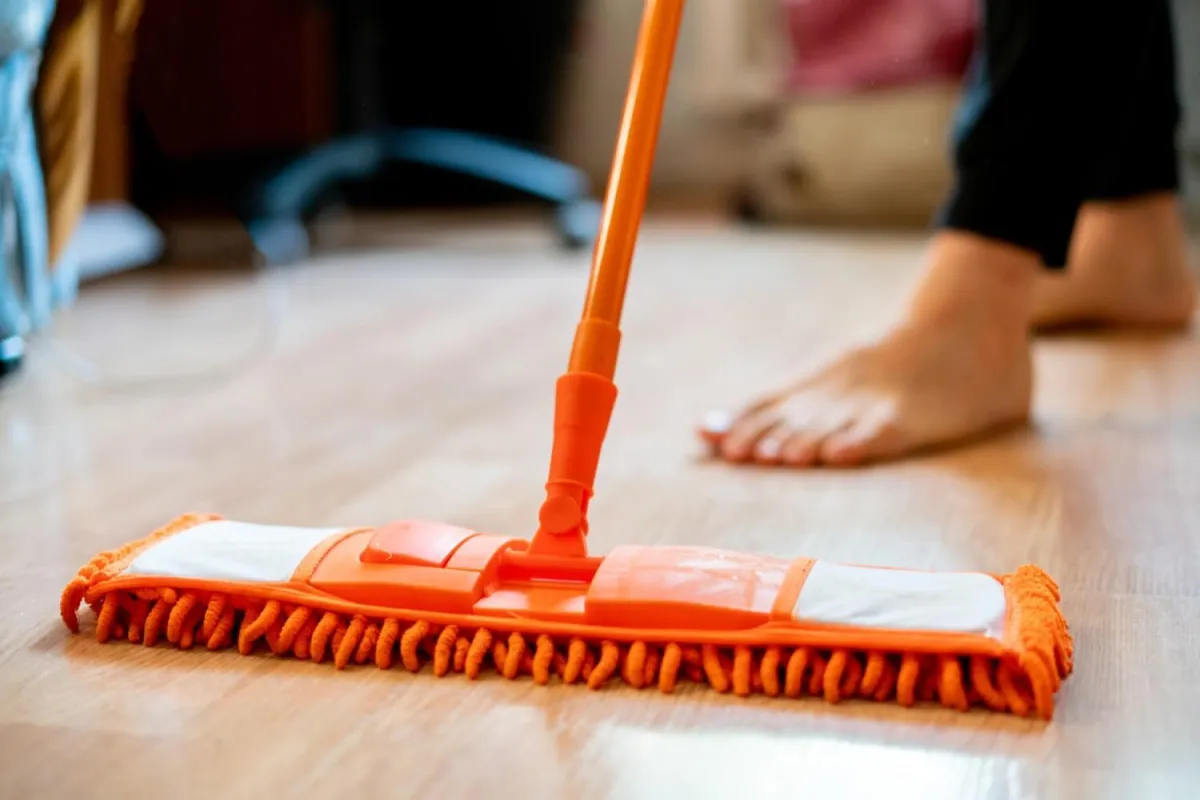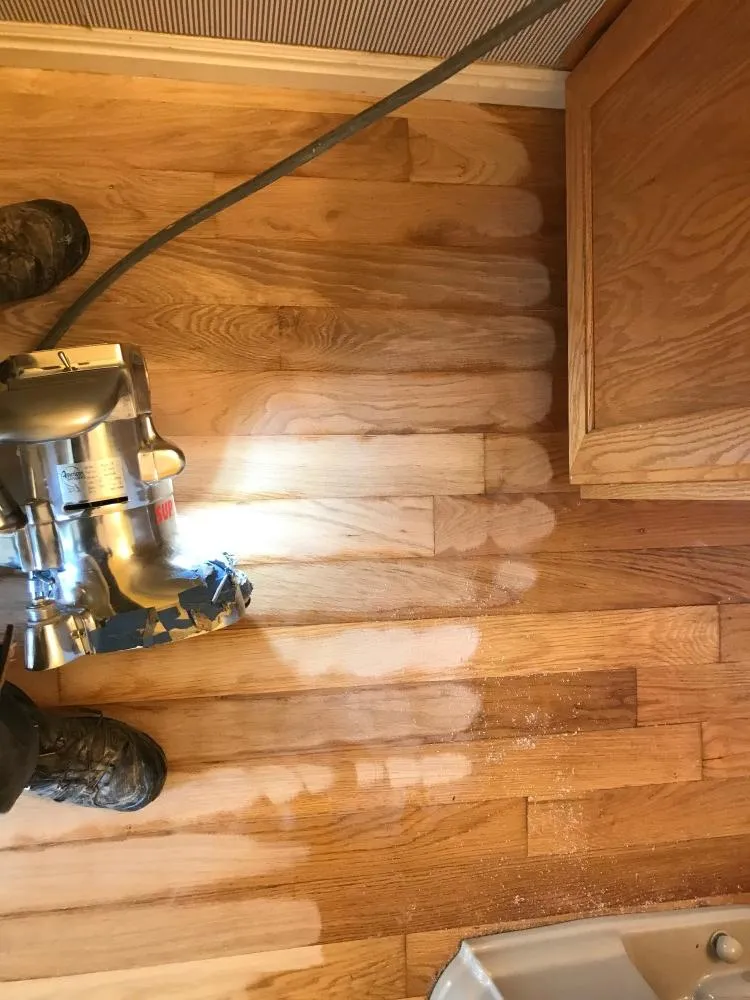How to Clean Your Hardwood Floor & Tips for Water Damage
Hardwood Cleaning Tips
It's not hard to keep your hardwood floor looking like new. Here are some cleaning and maintenance tips to keep your floor looking its best for years to come:
General Cleaning
General sweeping of your hardwood floor should be done anytime the dust or debris builds up. Mopping should be done when there is an overall need to wipe down the entire floor. Mopping does not refer to wet mopping, but should be considered a dry mopping technique. The best tool is a Swiffer-type mop, where you can add a washable or disposable cloth. Dampen lightly the cloth. Use just enough water to pick up dust or remove a water spot. The rule of thumb should be that your floor should be dry within 2 minutes of wiping. If it is not, you are using too much water.
Cleaners: Mopping with just a damp Swiffer is great, but some people like using a cleaner as well. Bona Brand Hardwood Floor Cleaner is a great option. It can be purchased at any grocery store and usually comes in a concentrated form. Dilute per the instructions and use a squirt bottle to spray the floor while mopping. Another good option is just a drop or two of Dawn and/or vinegar in a 32 oz. squirt bottle full of water. This amount is enough to clean the floor, but not enough to leave a residue or break down the finish.
DO NOT use the Bona Floor Polish or any product that says "Polish" or "gloss" or "wax" on the bottle. These products put a waxy finish on the floor which stops you from being able to do any type of "non-sanding restoration" or "recoat" in the future. In order to get that type of film off the floor, we would have to do a complete sanding refinish process.

BE CAREFUL using sprays when dusting your furniture. Old English, Pledge, Murphy's Oil Soap and other furniture sprays have wax. Spraying those cleaners on furniture will send an off-spray that will settle on your floor. If you choose to use these cleaners on your furniture, spray directly onto your cloth instead of into the air.
Spot Cleaning: Wipe up any spills as they happen. Don't let water, grease, or any other liquid sit on your hardwood for more than a few minutes. Some caustic liquids can eat the finish such as harsh cleaning chemicals so be careful about what you use around the floor.
For dried on foods, it is safe to clean up with water and any of the above cleaners, but wipe the area dry when finished.

Water Damage
If you have a major water leak from your toilet, sink or refrigerator, clean up the water immediately! You will be able to reduce the damage to the wood by drying the area as quickly as possible. Please note, the finish (the clear coat protectant) is not waterproof. It was not developed to waterproof the floor, only to protect the floor temporarily. Most of the water from a leak will seep between the planks, down to the subfloor and be soaked in by the underside of the planks. So, the quicker the water can be cleaned up from above, the better.
Once the water is cleaned up and the top of the floor is dry, put a strong fan on the area to continue drying the planks. If you have the ability to also dry it from the bottom (like from a crawlspace under the house or an unfinished basement), place a fan pointing up to the underside of the subfloor.
If you start to see the planks cupping, then this means the water has done quite a bit of damage. However, once the plank is completely dry, the cupping will show how much damage was actually done. Some minimal cupping will return back to normal once the plank is completely dry. When dry, the floor can be refinished, if needed.
If the damage is bad enough that it needs to be refinished or replaced, give us a call to come take a look. We can give you an estimate that can be forwarded to your adjuster if you choose to make a claim on your insurance. (We do not recommend calling a restoration company unless the damage is extensive and you don't have enough fans to dry the floor.)
Water Damage
If you have a major water leak from your toilet, sink or refrigerator, clean up the water immediately! You will be able to reduce the damage to the wood by drying the area as quickly as possible. Please note, the finish (the clear coat protectant) is not waterproof. It was not developed to waterproof the floor, only to protect the floor temporarily. Most of the water from a leak will seep between the planks, down to the subfloor and be soaked in by the underside of the planks. So, the quicker the water can be cleaned up from above, the better.
Once the water is cleaned up and the top of the floor is dry, put a strong fan on the area to continue drying the planks. If you have the ability to also dry it from the bottom (like from a crawlspace under the house or an unfinished basement), place a fan pointing up to the underside of the subfloor.
If you start to see the planks cupping, then this means the water has done quite a bit of damage. However, once the plank is completely dry, the cupping will show how much damage was actually done. Some minimal cupping will return back to normal once the plank is completely dry. When dry, the floor can be refinished, if needed.
If the damage is bad enough that it needs to be refinished or replaced, give us a call to come take a look. We can give you an estimate that can be forwarded to your adjuster if you choose to make a claim on your insurance. (We do not recommend calling a restoration company unless the damage is extensive and you don't have enough fans to dry the floor.)

©2024 St. George Hardwood Floors | Powered By EARN GREATER PROFITS
